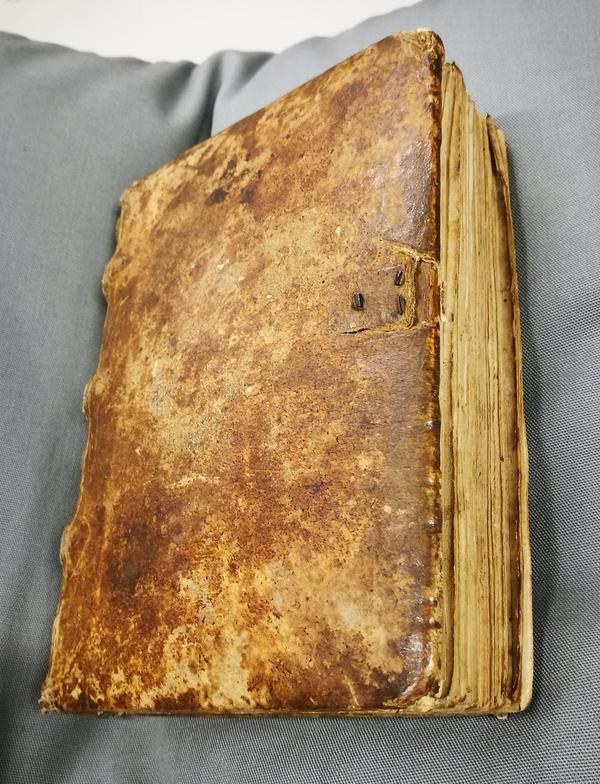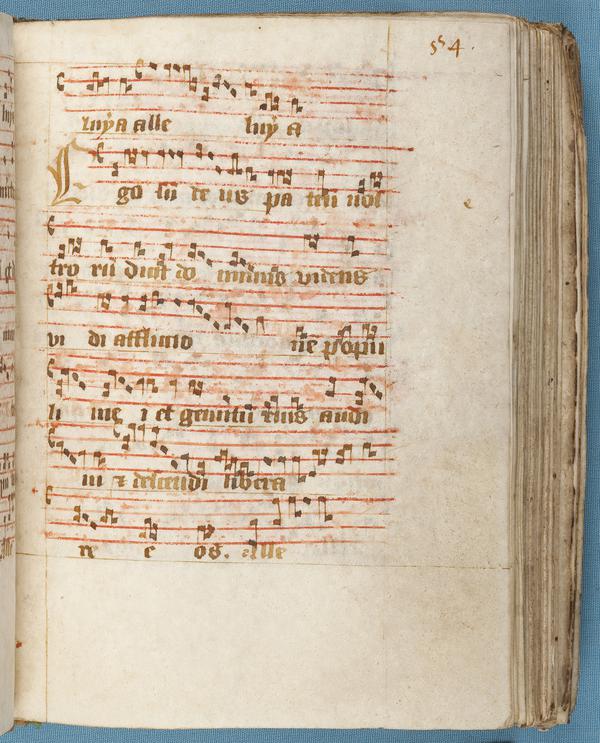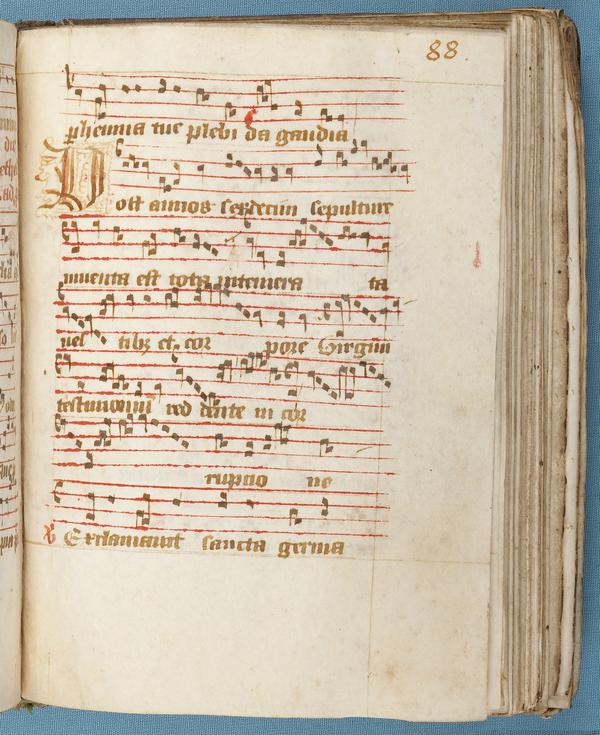manuscript
Accession Number NWHCM : 1926.158.4g.4
Description
East Anglian processional with music; text written in Latin; contains music for anthems and feast days used at Bury St Edmunds; original binding, made from wooden boards covered with vellum; clasp missing, though imprint, studs and holes remain, back binding paper is a sheet of vellum with some odd words on it in a different probably earlier hand, last two folios 125v and 126r are in a different hand from the rest of the book; the 126 parchment folios are numbered in a later hand probably 17th century; the capitals are coloured and ornamented with flourishes, this is the only decoration, from folio 32r to 65v capitals are in outline without colour, on a flyleaf is a note in Latin probably 17th century stating that book came from Abbey of Bury St Edmunds and signed J.A. Cobbes Bury Saints
Read Moremanuscript
This book was made during the 15th century and is still in its original binding of wooden boards covered in vellum (a prepared animal skin used in medieval book making). The vellum used for the back binding paper has some odd words on it in a different, probably earlier hand – suggesting it has been reused from an earlier manuscript. The clasp, which once held the book shut, is now missing but its imprint can still be seen, and the studs and holes remain where it was once attached. The last two folios 125v and 126r are in a different hand from the rest of the book and page numbers were added, probably during the 17th century.
Written in Latin by hand in black ink, this book is a processional to be used in a monastic church. A processional is a small portable book containing the music and text for church processions in the Catholic Church. Specific chants would be sung at different stages of processions during the various feast days of the church. Processionals were first introduced in the 10th and 11th centuries and are of particular musical interest because they contain antiphons (short chants sung as refrains), verses, rhymed Preces(prayers with responses) and polyphonic or multi-voiced chants that do not appear in other liturgical books. This book also includes the musical notation for the chants as well as the words, so it is still possible to sing or chant the music today.
On the fly leaf of the book is a note in Latin saying that it came from the Abbey of Bury St Edmunds in Suffolk. The inscription is signed ‘J.A. Cobbes Bury Saints’ and probably dates from the 17th century. Established in 1020, St Edmunds Abbey was once one of the largest and richest Benedictine monasteries in England. It was home to the remains of the East Anglian king, Edmund (c. 841-869), who was martyred in battle by the Viking army in 869 and subsequently canonised a saint. Because of the holy relics of Saint Edmund, the Abbey became a nationally important place of pilgrimage and attracted many donations. Directions for the procession in the Festival of the Translation of Saint Edmund are found on folio 85 of this processional.
During the English Reformation, Henry VIII broke with the Catholic Church in Rome and Dissolved the monasteries, taking their wealth for himself. On 4 November 1539, the abbot and monks of St Edmunds Abbey were expelled and the abbey was dissolved. Saint Edmund’s shrine was deestroyed and the gold and silver stripped from it. The abbey church itself was partially demolished and the building materials were taken away for use elsewhere in Bury.
It is likely that our processional was removed from the abbey during that period of religious upheaval. During and after the Protestant Reformation church processions were greatly changed and many were abolished so pre-Reformation processionals such as this one were no longer required. Its whereabouts during the 17th century are uncertain although the inscription suggests it was owned by J.A. Cobbes from Bury St Edmunds. It is next recorded during the 18th century among the manuscripts of Cox Macro (1683-1767), who was the senior doctor of Divinity at Cambridge University and chaplain to King George II. His father, Thomas Macro (1649-1737), had been five times chief magistrate of Bury St Edmunds. Cox Macro owned many manuscripts from the library of St Edmunds Abbey, including the great register of Bury Abbey. The processional then passed through marriage with Cox Macro’s other possessions to the Patteson family, who gave it and their collection of other, mainly English, manuscripts to Norwich Castle Museum in 1961.











































































































































































































































































